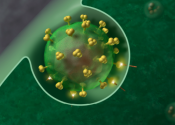New therapy shows promise for a rare childhood dementia
New RNA-targeted therapy can halt the progression of a specific type of childhood dementia in mice and holds potential to reverse some of the detrimental effects of this rare disease.
5 hours ago
0
0









